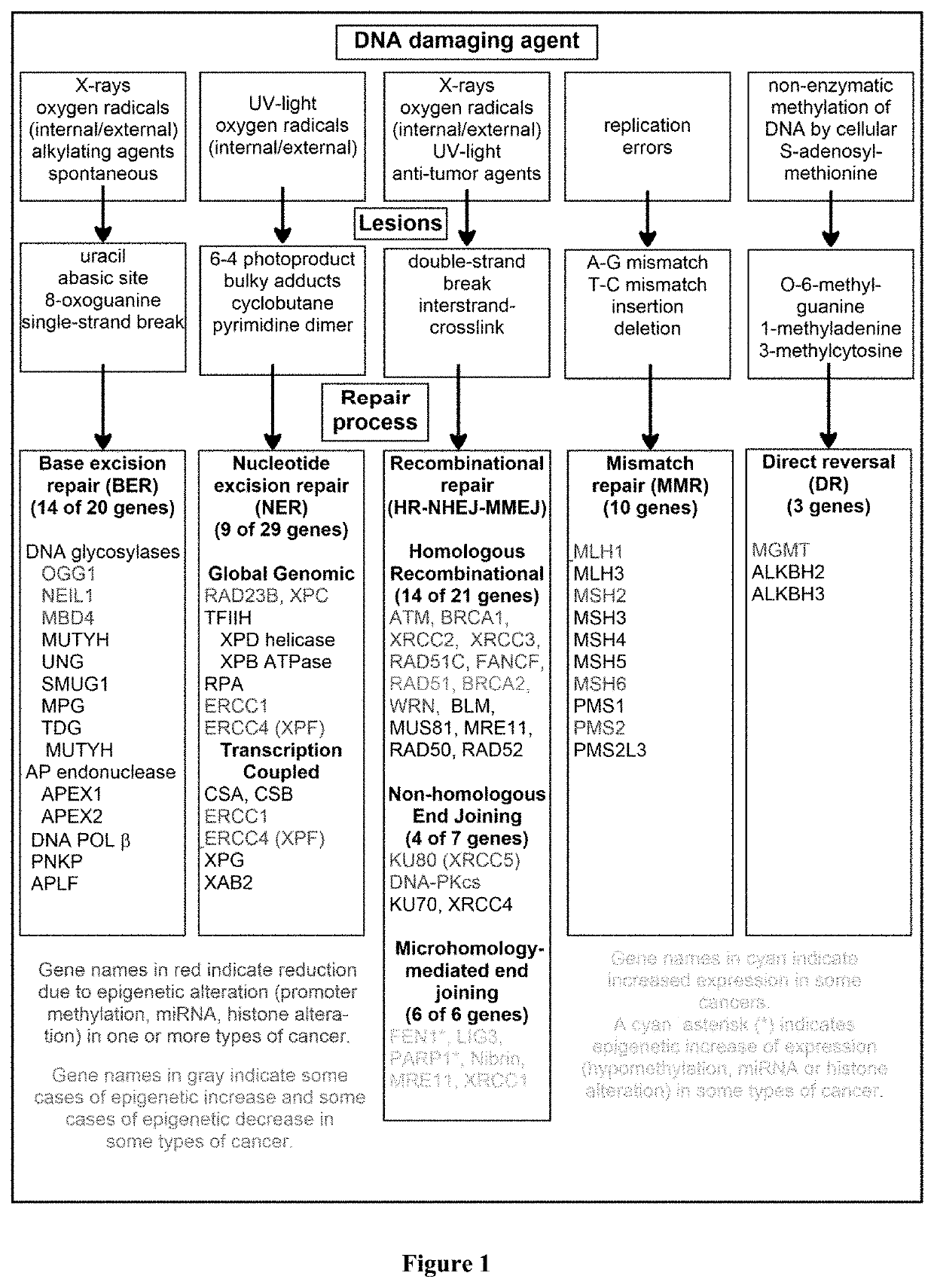DNA repair profiling and methods therefor
a dna repair and profiling technology, applied in the field of dna repair profiling and methods, can solve the problems of increasing cancer incidence, reducing life span, and constantly subjecting mammalian dna to chemical, physical, genomic instability and cell death,
- Summary
- Abstract
- Description
- Claims
- Application Information
AI Technical Summary
Benefits of technology
Problems solved by technology
Method used
Image
Examples
example 1
[0040]A whole blood sample is provided and divided into two aliquots. A first aliquot is used to isolate cell free RNA, cfRNA (and where desired cell free DNA, cfDNA) as described below. However, various other bodily fluids are also deemed appropriate so long as cfRNA is present in such fluids. Appropriate fluids include saliva, ascites fluid, spinal fluid, urine, etc, which may be fresh, chemically preserved, or refrigerated or frozen. For example, specimens can be accepted as 10 ml of whole blood drawn into commercially available cell-free RNA BCT® tubes or cell-free DNA BCT® tubes (Streck, 7002 S. 109 St., Omaha, Nebr. 68128) containing RNA or DNA stabilizers, respectively. Advantageously, cfRNA is stable in whole blood in the cell-free RNA BCT tubes for seven days while cfDNA is stable in whole blood in the cell-free DNA BCT Tubes for fourteen days, allowing time for shipping of patient samples from world-wide locations without the degradation of cfRNA or cfDNA. Moreover, it is ...
example 2
[0044]A whole blood sample is drawn from a patient diagnosed with cancer and processed as noted in Example 1 above. In addition, a fresh tumor biopsy is obtained and a full omics analysis performed in which DNA sequencing is whole genome sequencing at a depth of at least 20× for DNA and RNA. In addition, quantitative RNA analysis is employed to obtain transcriptomics information. Where available, proteomics analysis is performed using selected reaction monitoring for at least two, or at least 4, or at least 10, or at least 20 different proteins associated with DNA repair. Where desired, proteomics analysis is performed using selected reaction monitoring for at least two, or at least 4, or at least 10, or at least 20 different proteins associated with DNA repair. So obtained omics information can then be processed using pathway analysis (especially using PARADIGM) to identify any impact of any mutations on DNA repair pathways.
example 3
[0045]Once omics analysis for a patient sample (e.g., of Example 2) is concluded, changes in DNA, RNA, and protein (activities) relative to omics data of age-matched healthy individuals are noted. Such changes may be labeled idiosyncratic where no statistical association with a known disease pattern is observed, or changes may be associated with a pattern that is characteristic of a disease. As noted above, analysis may include observation on individual genes associated with DNA repair, or on multiple genes, alone or in various relationships (e.g., ratio, sum, etc.).
PUM
| Property | Measurement | Unit |
|---|---|---|
| transcription strength | aaaaa | aaaaa |
| mass spectroscopic method | aaaaa | aaaaa |
| weight | aaaaa | aaaaa |
Abstract
Description
Claims
Application Information
 Login to View More
Login to View More - R&D
- Intellectual Property
- Life Sciences
- Materials
- Tech Scout
- Unparalleled Data Quality
- Higher Quality Content
- 60% Fewer Hallucinations
Browse by: Latest US Patents, China's latest patents, Technical Efficacy Thesaurus, Application Domain, Technology Topic, Popular Technical Reports.
© 2025 PatSnap. All rights reserved.Legal|Privacy policy|Modern Slavery Act Transparency Statement|Sitemap|About US| Contact US: help@patsnap.com

